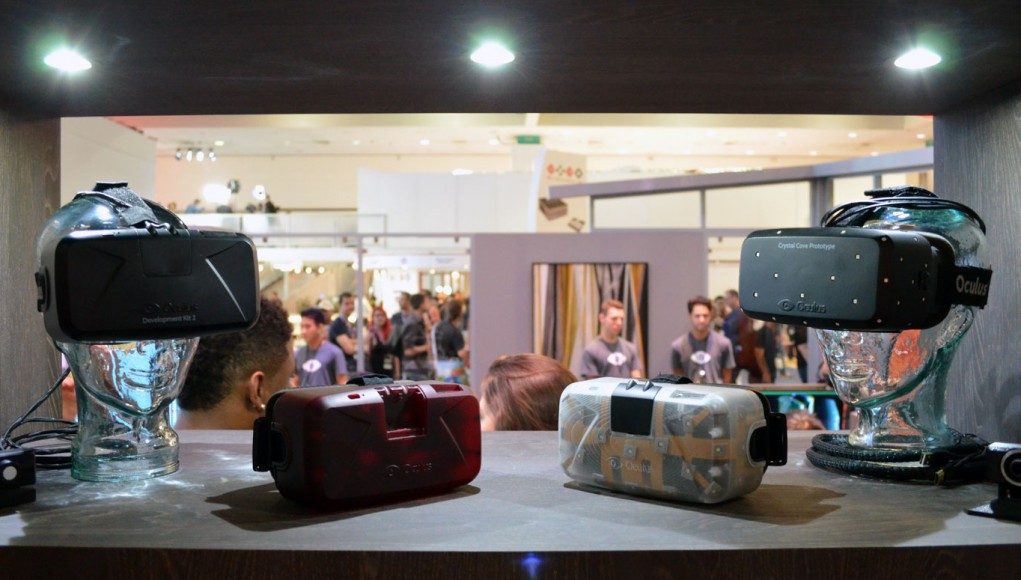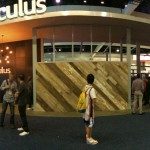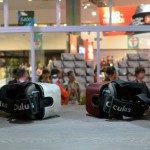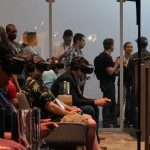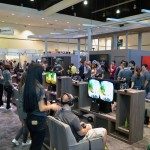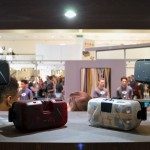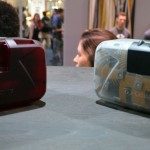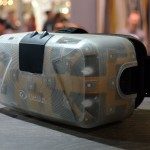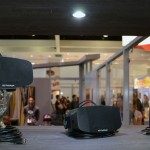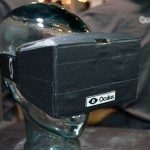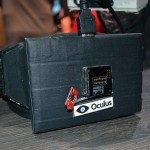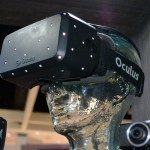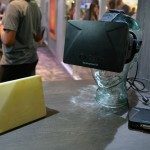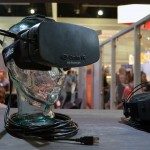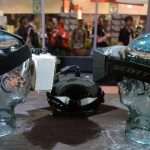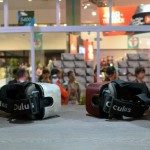At E3 2014, Oculus VR debuts one of their biggest and most impressive booths yet. Stationed right near the big three (Sony, Microsoft, and Nintendo), Oculus’ booth is surrounded by fans hungry to get their heads into the latest VR demos. Within the booth, a mini-museum reveals never before seen Rift prototypes.
Chez Oculus, E3 2014
If you wanted to form a very quick graphic indication of how Oculus VR has grown as a company, simply take a look at their progressively extravagant (albeit always extremely practical) show stands over the last couple of years. At this year’s E3, the company behind the renaissance of virtual reality has once again upped its own ante and taken over a huge portion of the E3 show floor with a boutique show area.
The floor is split up into mini-lounges, complete with dedicated monitors with faux objet d’art dotted about the place. Its very retro-modern, chic, and yet suitably cosy. Anyway, as Road to VR tradition now dictates, we like to be able to give those unable to be at E3 2014 a feel of what it’s like to be there. Therefore, we’ve compiled a batch of snaps which we think captures the place well.
Below you can see the extent of the line that the Rift booth attracts:
The Oculus Rift Mini-museum
Oculus are unusual in the consumer technology or gaming hardware industry, they’re incredibly open to showing their significant leaps. In the last 2 years, press and public have been treated to numerous iterations on technology and design.
Well, as a testament to how far the Oculus Rift has some since its GDC 2012 public debut, and perhaps to emphasise to the impatient fans just how much work goes on behind the scenes, this year’s booth holds an integrated mini-museum of Oculus Rift prototypes. The small, curated collection gives a good overview of the transition from past to present although it’s by no means exhaustive. Talking to Road to VR’s Ben Lang, Palmer Luckey told him “It isn’t a comprehensive display… we had to be careful what prototypes we showed…”—giving a teasing insight into perhaps design and technologies not followed but potentially still valuable in the future or to others.
For those of you who’ve been following the Oculus story from the beginning, you’ll likely recognise some of them. So here’s a challenge for you: Can you name when and where we saw each of the below devices first? Throw your answers in the comments below and we’ll see who gets the most.

